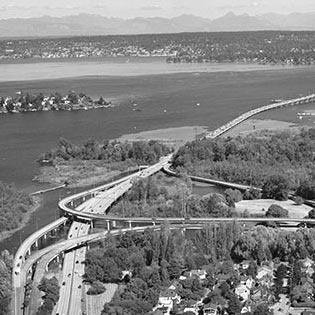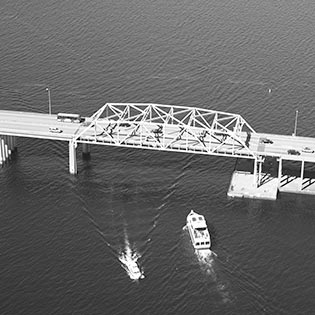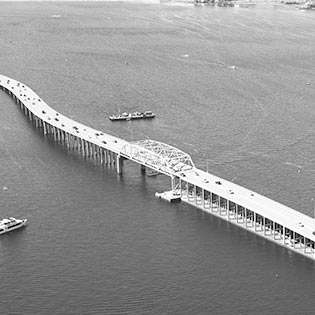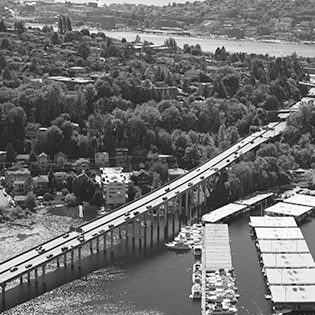AUDIO
MP3 Download: Listen to Archie Allen, Bridge Maintenance and Operations Superintendent at the Washington State Department of Transportation, talk about monitoring storm damageon the bridge.
MP3 Download: Listen to Archie Allen, Bridge Maintenance and Operations Superintendent at the Washington State Department of Transportation, talk about the effects of earthquakeson the bridge.
RESOURCES
- The SR 520 Bridge “Official Opening Program” (pdf 4mb)
- Evergreen Point Bridge Written Narrative (pdf 8.3mb)
- Evergreen Point Bridge - Field Records (pdf 480 kb)
Links to external websites do not constitute endorsement by WSDOT of the linked websites or the opinions, information, products or services contained therein.
When local, regional, state and federal dignitaries cut the ribbon to open the Governor Albert D. Rossellini (Evergreen Point) Bridge in 1963 it was the most expensive and one of the most technically advanced floating bridges in the world. Over the next 53 years the bridge played a major role in the development of the Seattle metropolitan area, where the bridge provided easy access for commuters travelling between Seattle and the communities east of Lake Washington. The bridge paved the way for increased suburban development to support population expansion and the development of the east side of Lake Washington into one of the region’s largest employment centers.
While the region reshaped itself and changed in ways most could only imagine over the decades the bridge was in service, little about the bridge had changed since Gov. Rosellini, the mayors of Seattle and Bellevue, and the president of the American Automobile Association opened the $30 million bridge on Aug. 28, 1963. As the bridge aged, it became apparent that it no longer could safely serve the transportation needs of the region.
Following over a half decade of service, the old floating bridge had begun to float about a foot lower than originally designed and was closed during major storms and high winds – eliminating one of the two vital transportation corridors across Lake Washington. The aging structure required patching and repairs over the years. Contractors completed a limited seismic retrofit on the approach structures in 1999. The bridge remained at risk of collapse in an earthquake, however, because the west and east approaches rested on hollow piles that did not meet seismic design standards. Nonetheless, the old floating bridge kept people in the region moving until a new SR 520 floating bridge opened to traffic in April 2016.



